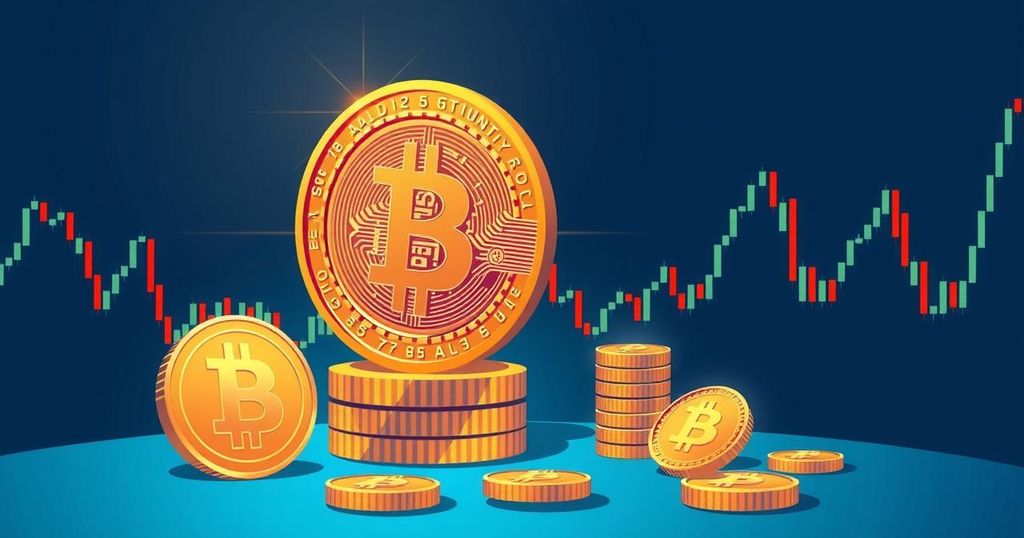Study Reveals Most Altcoins Decline Rapidly Against Bitcoin
A study from Swan shows most altcoins are rapidly declining against Bitcoin, with many reaching 90% losses within months. This trend suggests Bitcoin’s stronger position as a stable asset. Despite the emergence of new tokens, the altcoin market faces significant challenges, raising doubts about the return of a traditional “altcoin season.”
A recent analysis from Swan, a financial services firm focused on Bitcoin, has shed light on the troubling trend faced by most altcoins. When compared to Bitcoin (BTC), it appears that altcoins are experiencing a swift and systemic depreciation. This evidence suggests Bitcoin maintains its status as a more reliable store of value amidst the often volatile cryptocurrency landscape.
In a thread posted on X, formerly known as Twitter, Swan articulated its findings. The message was clear: “Altcoins don’t just underperform Bitcoin. They collapse against it.” The study investigated the performance of the top 300 altcoins over five years, particularly looking at how quickly these coins lose 90% of their value when compared to Bitcoin after hitting their all-time highs.
Swan’s results were quite telling. The median altcoin saw a staggering -90% drawdown in just a span of 10 to 20 months. Furthermore, several altcoins, including Terra (LUNA1), Ontology Gas (ONG), and Bitgert (BRISE), took mere months to reach this concerning benchmark — under two months, in fact. Even more established names like Cardano (ADA) and XRP (XRP) were not exempt, taking around 36 months for a similar drop. Litecoin (LTC) showed a slower decline, needing 69 months, while Monero (XMR) managed to last six years before hitting that critical decline.
Interestingly, Swan’s report also highlighted 45 altcoins that so far haven’t fallen to a -90% drawdown. While they haven’t yet collapsed, the data suggests these altcoins are only postponing their inevitable losses. On average, they’re down by 76% from their peak values, and the top performer among them still lags by 43% compared to Bitcoin. Swan summarised the situation well, stating, “Bitcoin remains the benchmark for capital preservation. These assets don’t hedge Bitcoin — they bleed against it.”
The findings shine a spotlight on a systemic challenge within the altcoin realm. Many of these currencies, initially touted as alternatives to Bitcoin, struggle to maintain long-term value. Swan also pointed out that occurrences of altcoins outperforming BTC over a long duration are exceedingly rare. The firm attributed some of this discrepancy to survivorship bias, where only successful projects get the limelight, concealing the broader downward trend.
John Haar, an executive at Swan, quipped, “With performance like this, it’s astonishing that altcoins continue to exist. Then again, humans love gambling.” The situation raises eyebrows, particularly considering how saturation in the altcoin market could influence future trends.
According to data from CoinMarketCap, a staggering 1.8 million tokens have been created in just the past month alone. However, most of these tokens fail to live up to expectations. In fact, BeInCrypto reported recently that 89% of tokens listed on Binance in 2025 are currently in the red. It suggests that the driving forces behind newer altcoins are more about speculative trading rather than any solid underpinnings.
Adding to the woes caused by this token explosion is the fragmentation of market liquidity, which hinders the long-anticipated emergence of an “altcoin season.” Some experts now argue that the traditional altcoin season might never return. This shift seems to correlate with Bitcoin’s growing influence, fuelled by increasing institutional adoption and regulatory scrutiny. As Bitcoin tightens its grip on the market, it leaves altcoins struggling to garner investor engagement and relevance in this heated race for dominance.




Post Comment